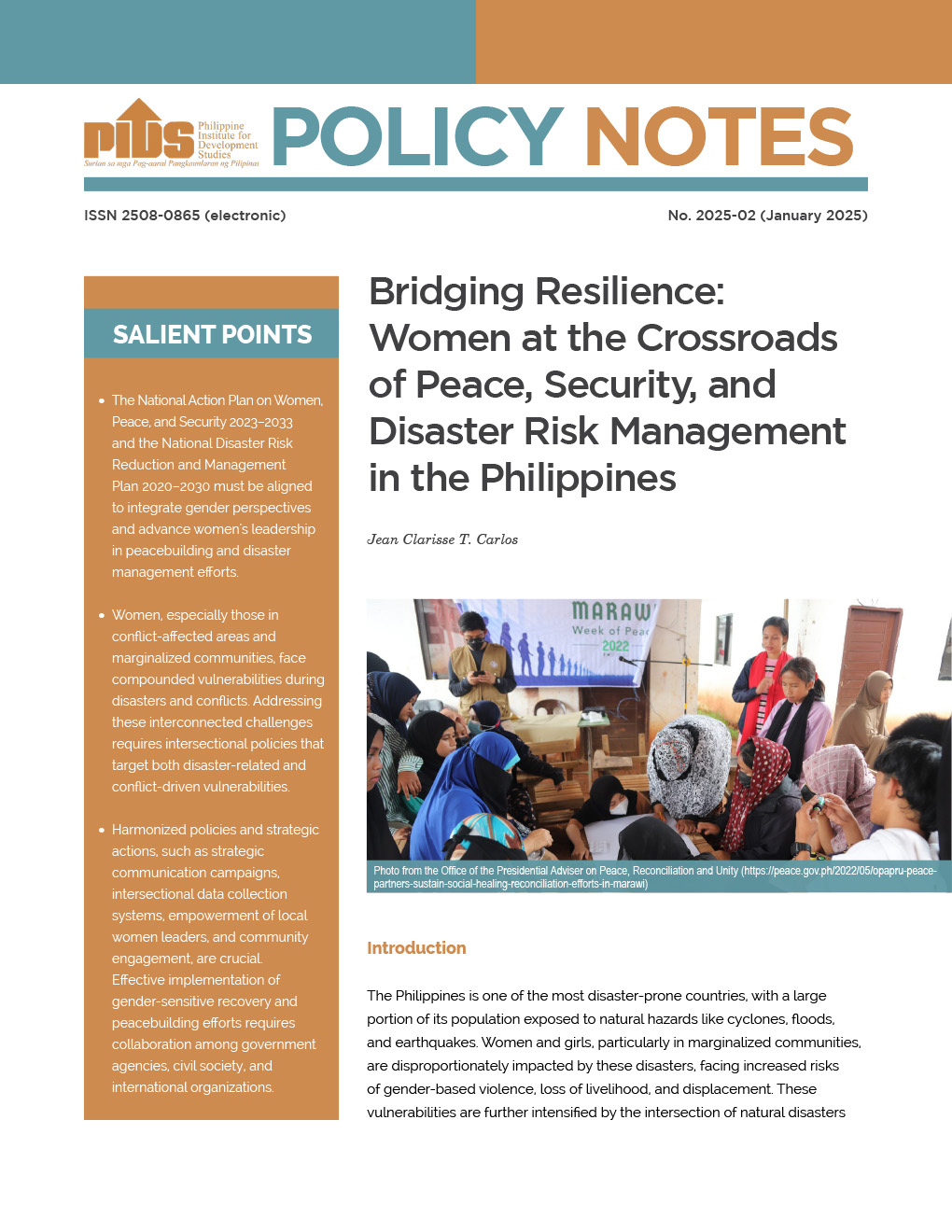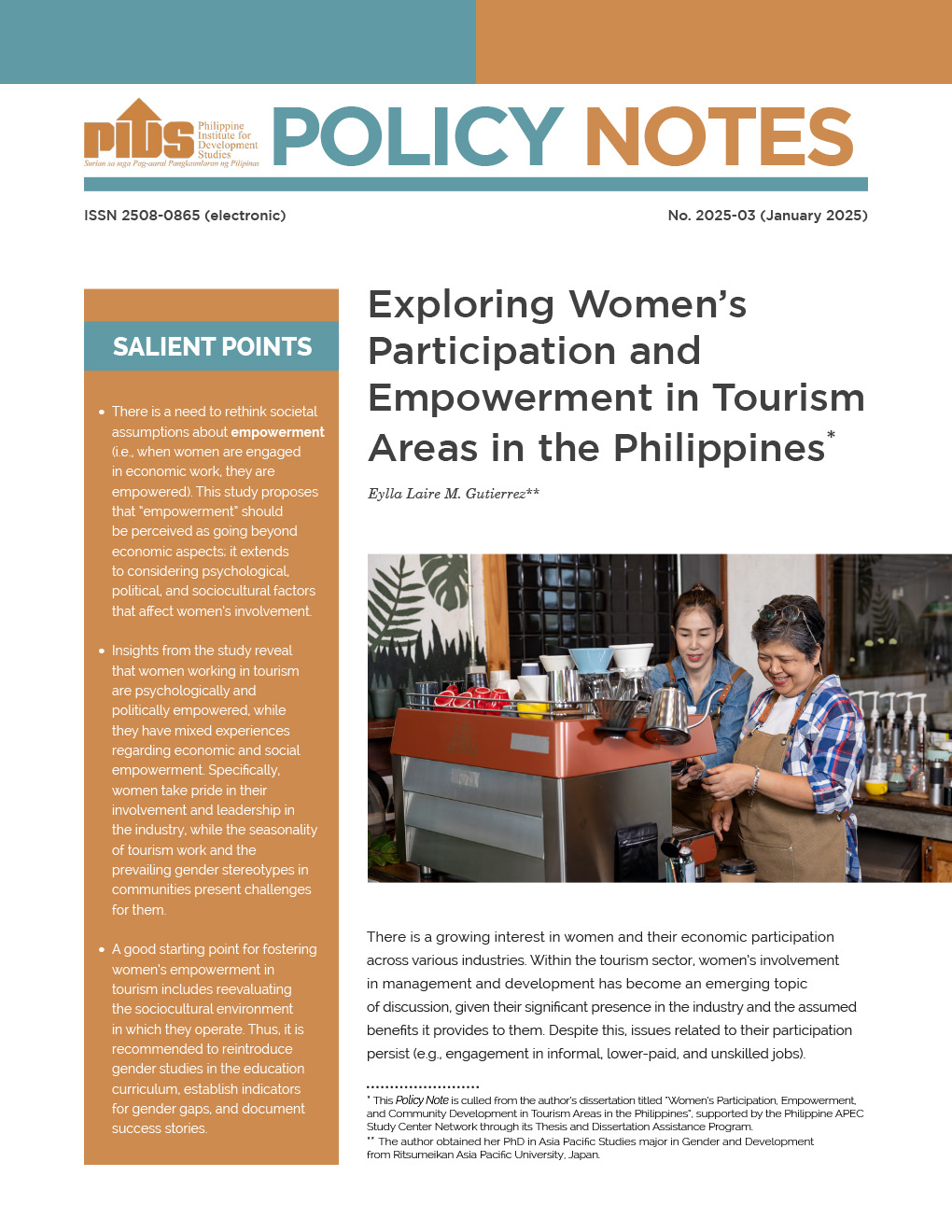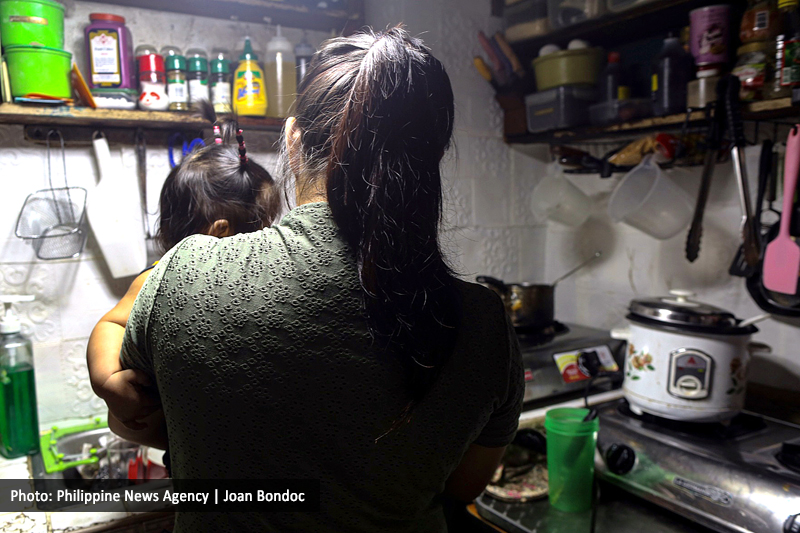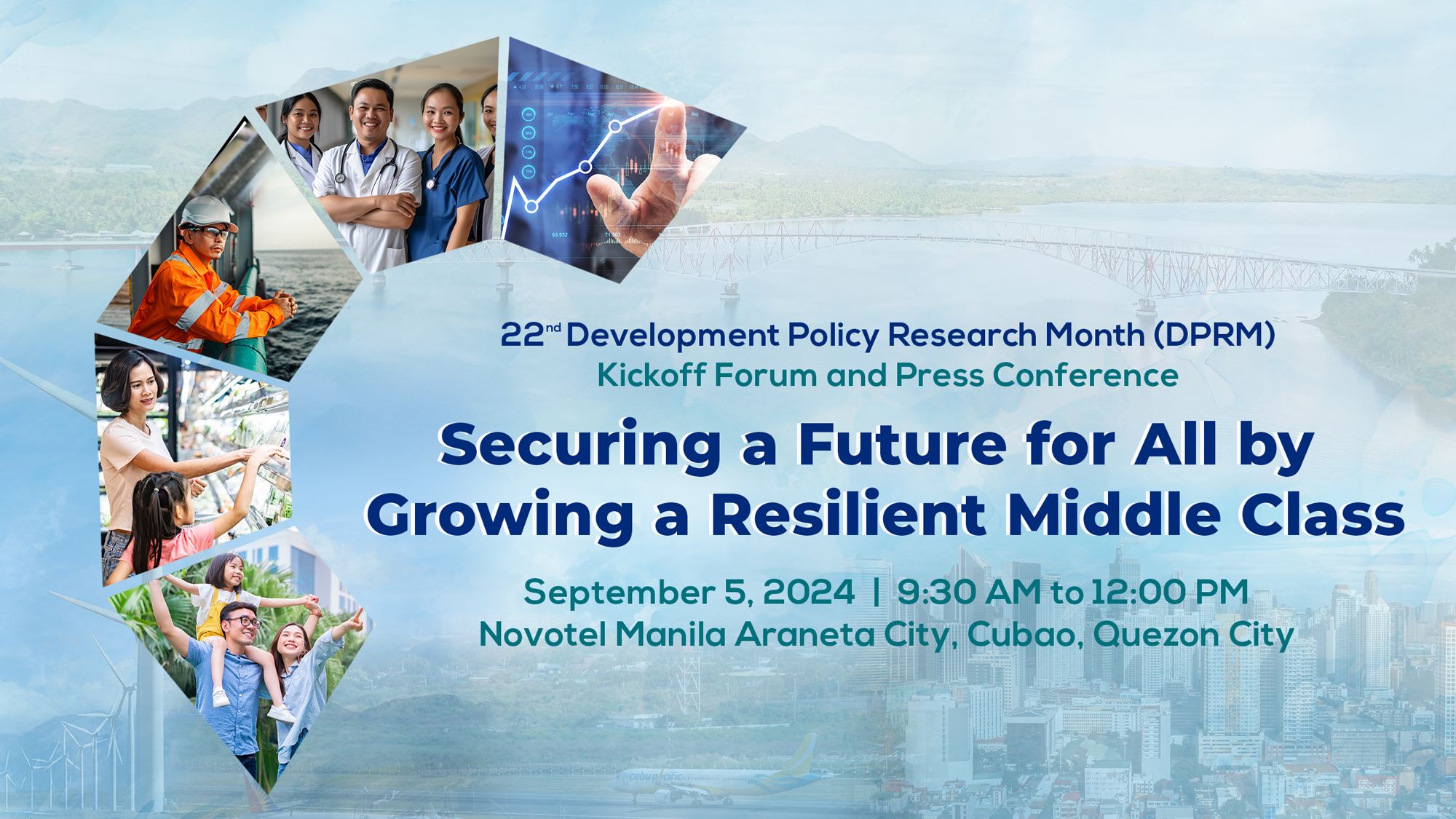
“Even though women have already attained a lot in terms of education, it does not get translated into their labor market participation.”
This was according to Connie Dacuycuy, senior research fellow at the Philippine Institute for Development Studies (PIDS) and volume editor of PIDS’ first book on gender and development titled Outside Looking In: Gendered Perspectives in Work and Education. The book was launched at Novotel in Cubao, Quezon City on March 9.
Dacuycuy noted that from 1990 to 2018, there had only been three to four percentage points increase in women’s labor force participation rate in the Philippines.
“From 1990 it was around 48 percent and in 2018 it was around 51 percent… that is really, really small and you get to think, what happens to their education?” Dacuycuy said, adding that this might be attributed to women doing housework.
“We are not saying here that doing housework is bad at all... There are good things that come with doing housework, like you get to spend more time with your children,” Dacuycuy explained, noting two findings in the book that said parental time has a positive impact on children’s schooling outcomes and that women contribute about 47 percent to the country’s labor income, including unpaid home production activities.
“Housework is important in nurturing not only the current generation, but also the future generations,” Dacuycuy said. However, because of this, she said the country may be “missing out on a lot of things”, adding that “women have skills, women have potential, women have knowledge that they can share.”
Similarly, Rex Varona, national project coordinator of International Labour Organization’s Safe and Fair Programme, urged stakeholders to also look at the relationship between migration and women’s labor market participation, citing Filipino women who work overseas.
“If you remove the nurturer in the house, who will assume that role? The children, by consequence, would suffer more in terms of performance in school. Hopefully, the conclusion is not that women will maintain that [role], but [that] men and women will share that role,” Varona explained.
Meanwhile, Dacuycuy also pointed out that women who decide to enter the labor force are confronted with pay gaps. For instance, one study in the book found existing pay differential between men and women in the agricultural sector, especially those not requiring physical effort. ###
A copy of the PIDS book may be downloaded here.
This was according to Connie Dacuycuy, senior research fellow at the Philippine Institute for Development Studies (PIDS) and volume editor of PIDS’ first book on gender and development titled Outside Looking In: Gendered Perspectives in Work and Education. The book was launched at Novotel in Cubao, Quezon City on March 9.
Dacuycuy noted that from 1990 to 2018, there had only been three to four percentage points increase in women’s labor force participation rate in the Philippines.
“From 1990 it was around 48 percent and in 2018 it was around 51 percent… that is really, really small and you get to think, what happens to their education?” Dacuycuy said, adding that this might be attributed to women doing housework.
“We are not saying here that doing housework is bad at all... There are good things that come with doing housework, like you get to spend more time with your children,” Dacuycuy explained, noting two findings in the book that said parental time has a positive impact on children’s schooling outcomes and that women contribute about 47 percent to the country’s labor income, including unpaid home production activities.
“Housework is important in nurturing not only the current generation, but also the future generations,” Dacuycuy said. However, because of this, she said the country may be “missing out on a lot of things”, adding that “women have skills, women have potential, women have knowledge that they can share.”
Similarly, Rex Varona, national project coordinator of International Labour Organization’s Safe and Fair Programme, urged stakeholders to also look at the relationship between migration and women’s labor market participation, citing Filipino women who work overseas.
“If you remove the nurturer in the house, who will assume that role? The children, by consequence, would suffer more in terms of performance in school. Hopefully, the conclusion is not that women will maintain that [role], but [that] men and women will share that role,” Varona explained.
Meanwhile, Dacuycuy also pointed out that women who decide to enter the labor force are confronted with pay gaps. For instance, one study in the book found existing pay differential between men and women in the agricultural sector, especially those not requiring physical effort. ###
A copy of the PIDS book may be downloaded here.












